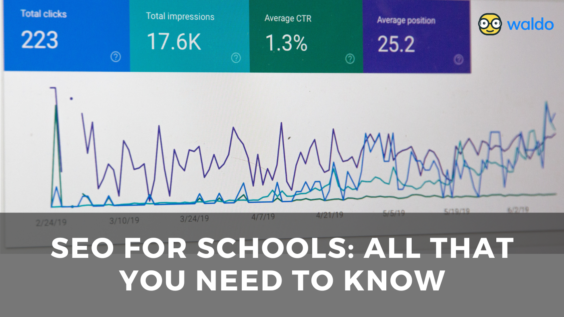
In today’s digital age, schools are heavily relying on search engines to attract prospective students and boost enrollment numbers. Search engine optimization, also known as SEO, is crucial in improving a school’s online visibility and attracting organic traffic. By implementing effective SEO strategies, you can enhance your online presence and reach a wider audience of potential students. Because it’s such a complex topic, however, we know that knowing where to begin can be daunting. That’s why we’re breaking down the basic SEO skills you need to set your school apart from the competition and help you rank higher on search engines.
SEO For Schools: What You Need to Know
1. Conduct Keyword Research
Keyword research is the foundation of any successful SEO strategy. Start by identifying relevant keywords and phrases that potential students might use when searching for schools. Use keyword research tools (such as Ahrefs, Semrush, or Moz) to identify high-volume and low-competition keywords that align with your school’s offerings. Incorporate these keywords naturally throughout your website content, including in page titles, headings, meta descriptions, and body text.
2. Optimize Your Website Structure
Ensure that your school’s website has a clear and user-friendly set-up. Use descriptive and keyword-rich URLs for each page, making it easier for search engines to understand the content. It’s crucial to create a logical hierarchy with a main navigation menu that includes pages such as admissions, programs, faculty, campus life, etc. You also want to create a journey–in a sense–for your audience. As they go through your site, you want to help navigate them on a path that makes the most sense for what they’re searching for. This means linking to other similar content in your blogs and pointing them in the right direction to enrollment in as many natural ways as possible.
3. Create Compelling and Unique Content
Content is king when it comes to SEO. That’s right, you need a blog. Develop high-quality and engaging content that provides value to your target audience. Write informative blog posts, create videos showcasing your school, and create downloadable resources such as guides or ebooks that parents or students may find useful. Optimize your content with relevant keywords and ensure it’s easily shareable on social media platforms. Be sure to regularly update your content to keep both users and search engines engaged.
4. Build High-Quality Backlinks
Backlinks from reputable and relevant websites can significantly improve your school’s search engine rankings. Develop a link-building strategy to get backlinks from sources such as educational organizations and local directories. One of the easiest ways to get backlinks? Guest blogging. Reach out to other schools, alumni associations, and education-focused websites for potential partnership opportunities. Just remember, quality is more important than quantity when it comes to backlinks.
5. Optimize for Local Search
For schools targeting local students, optimizing for local search is vital. Utilize Google My Business to create a detailed profile for your school, including up-to-date contact information, address, and hours. Encourage students and parents to leave positive reviews, which can enhance your school’s credibility and visibility in local search results. Additionally, include location-specific keywords in your website content and meta tags to improve your chances of appearing in local search queries.
6. Use Social Media
Social media platforms provide an excellent opportunity to connect with prospective students and promote your school. Create Facebook, Instagram, and X (formerly Twitter) profiles, and regularly share engaging content related to your school for your students, parents, and alumni to see. When appropriate, include links to your website’s relevant pages in your social media posts to drive traffic and improve your SEO. Social media pages make a great place to share recent blogs.
7. Monitor and Analyze Performance
Regularly monitor and analyze your school’s SEO performance to identify areas for improvement. Utilize tools like GA4 (formerly Google Analytics) to track website traffic, user behavior, and conversions. Pay attention to key metrics such as organic search traffic, bounce rates, and keyword rankings. By analyzing this data, you can tailor your strategy to ensure your success.
How Waldo Can Help
Although Waldo can’t create your website or run your social media for you, we can help with social media content. Waldo’s Photo Manager helps your school gather photos and videos from teachers, parents, students, and outside photographers via SMS or email. With Waldo’s mobile and desktop apps, you can then access those photos and use them for your social media! No more spending hours trying to find royalty-free pictures. Want to learn more? Check out our blog about why amplifying your school’s brand on social is important.